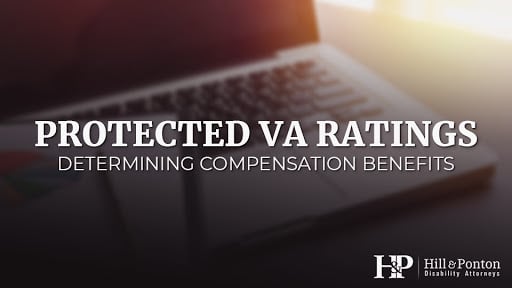Adjustment Disorder Va Disability Rating
adjustment disability ratingVeterans can be assigned a 0 10 30 50 70 or 100 percent rating. Rating agencies must be thoroughly familiar with this manual to properly implement the directives in 4125 through 4129 and to apply the general rating formula for mental disorders in 4130.

Did You Know About Adjustment Disorders Va Benefits Youtube
Rating agencies must be thoroughly familiar with this manual to properly implement the directives in 4125 through 4129 and to apply the general.

Adjustment disorder va disability rating. If you are considered service-connected you will receive a VA disability rating for ADJUSTMENT DISORDER of 0 10 30 50 70 or 100. So the rating schedule for Adjustment Disorder with Anxiety is in line with other mental illnesses like depression anxiety obsessive-compulsive disorder and other adjustment disorders. While VA ratings are generally available in 10 increments from 0 to 100 the ratings schedule provides that all mental illnesses will be rated as chronic adjustment disorders with only the percentages listed above.
Instead of asking What is the veterans diagnosis the VA rating formula asks What is the level of occupational and social impairment. The nomenclature employed in this portion of the rating schedule is based upon the American Psychiatric Associations Diagnostic and Statistical Manual of Mental Disorders Fifth Edition DSM-5 see 4125 for availability information. What is the disability rating for ADJUSTMENT DISORDER.
The essential feature of an Adjustment Disorder is the presence of emotional or behavioural symptoms in response to an identifiable stressor. People with an adjustment disorder may qualify for disability with the US. VA rates adjustment disorder using the General Rating Formula for Mental Disorders under 38 CFR 4130.
You might receive this VA disability rating for adjustment disorder with anxiety if youve been formally diagnosed but the condition is well-controlled. The VA follows a general rating formula for mental disorders. These individuals must exhibit symptoms of a chronic adjustment disorder which includes severe sadness hopelessness anxiousness or depression.
Department of Defense DoD does not. Mental health conditions such as Adjustment Disorder with Anxiety can incur VA ratings of 0 to 100 percent. The VA rates depression using the same general rating formula as all mental disorders including anxiety schizophrenia psychosis bipolar disorder PTSD and adjustment disorder.
Adjustment Disorder is a condition in the Diagnostic and Statistical Manual of Mental Disorders Fifth Edition DSM-5 category of Trauma- and Stressor-Related Disorders. However while the VA recognizes adjustment disorders as disabling conditions the US. Such ratings are based on the level of social and occupational impairment caused by the condition.
Department of Veterans Affairs VA. Does Adjustment Disorder Qualify for VA Disability. While a 0 rating doesnt provide any payments it does allow eligibility for health care and other benefits.
The VA assigns this rating which can range from 0 to 100 based on how severe it believes your condition is. The schedule for rating for mental disorders is set forth as follows. Veterans can be assigned a 0 10 30 50 70 or 100 percent disability rating.
The VA will give you a disability rating based upon the severity of your ADJUSTMENT DISORDER specifically related to your level of occupational and social impairment. Understanding VA Disability Rating Levels. Schizophrenia and other psychotic disorders.
VA rates adjustment disorder with anxiety using the General Rating Formula for Mental Disorders under 38 CFR 4130. If service connection is established VA will assign a disability rating based on severity. That means it does not interfere with your job or your social life and that you do not need to be on medication continually.
The VA Disability Compensation Scale for Chronic Adjustment Disorder Your VA disability compensation level depends on your VA impairment rating. To assign a 70 rating the VA must find symptoms such as suicidal ideation ritualistic behaviors illogical speech nearly continuous panic or depression impaired impulse control difficulty adapting to stress neglect of personal appearance or an inability to maintain relationships work or social.

